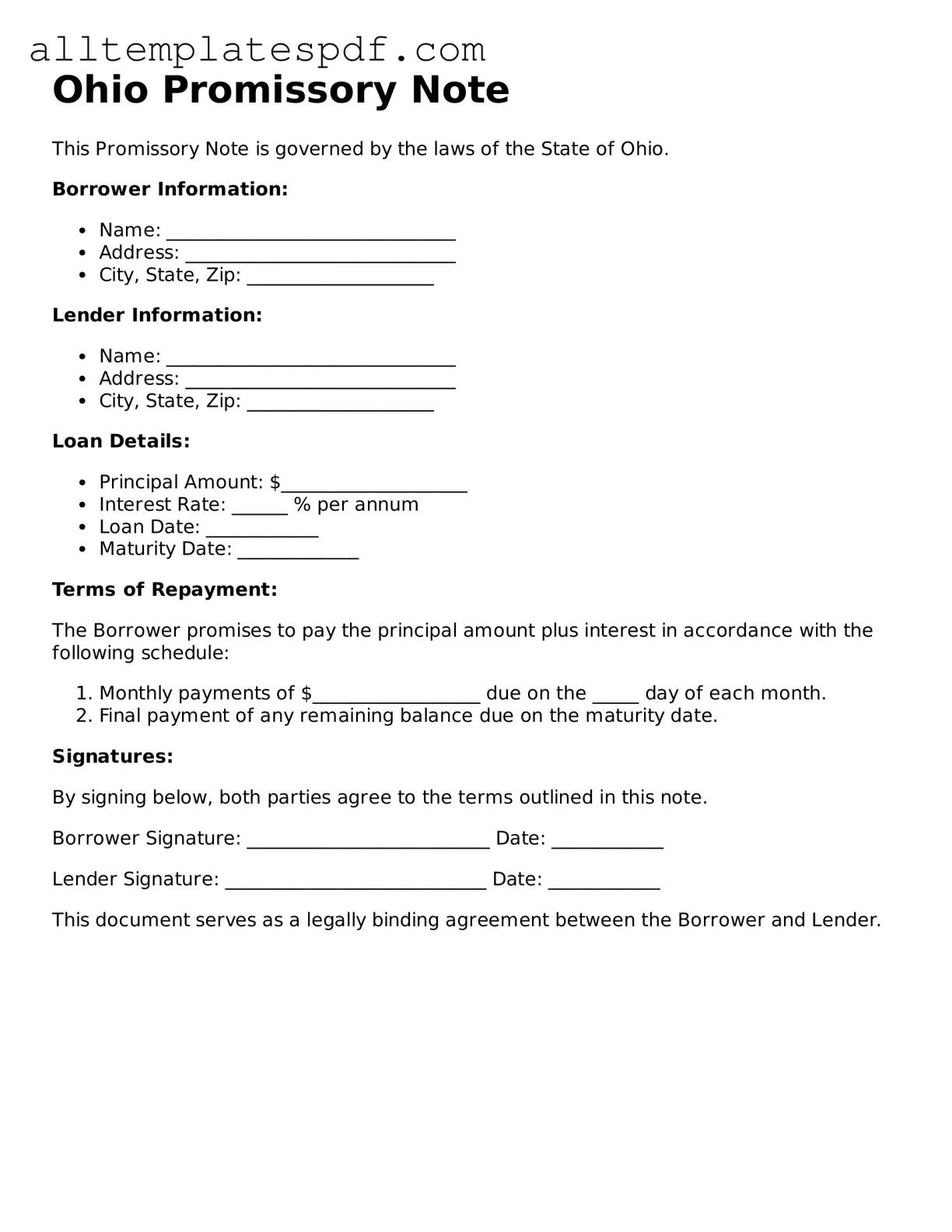Blank Promissory Note Template for the State of Ohio
A Promissory Note is a written promise to pay a specified amount of money to a designated party at a future date or on demand. In Ohio, this form serves as a legal document outlining the terms of the loan, including the interest rate and repayment schedule. To get started on your Promissory Note, fill out the form by clicking the button below.
Open Editor
